Looking for a few simple solutions to keep tomato blight away and keep your tomato plants safe from damage – for good?
There is little doubt that tomato blight can all but ruin a tomato harvest. Although there are several types and versions of the disease, blight is a fungal condition that can devastate and destroy otherwise healthy plants.
Although blight can infect potato plants, egg plants and even pepper plants – it is most notorious for striking the beloved tomato plant. Unfortunately, once it does, it can be nearly impossible to keep it from eventually wiping out the plant.

It usually starts out with the browning of leaves. From there, it quickly spreads to all of the foliage on the stems and branches – eventually, damaging and ruining the fruit as well. If that wasn’t enough, once it appears, it also spreads easily to neighboring plants, wiping out an entire crop in the process.
How Blight Spreads – How To Stop Tomato Blight
Blight is spread via spores that live in the soil. The spores can get into the soil by several different means. They can be blown in from the wind, carried in and left by insects or animals, or dropped by infected plants down to the dirt below.
Blight can also more easily occur when conditions are overly wet and cool. In fact, it’s usually far more prevalent when garden seasons are filled with lower temperatures and more rain as it helps feed and fuel the pace of the spread. As you will see below, it can also be made worse by improper watering.
Beyond heavily damaging and/or destroying tomato plants, once blight occurs, it unfortunately damages the soil where the crops grew as well. And it does so for several years afterwards. That is because once the spores appear, they can live in the soil below for as many as four to five years.
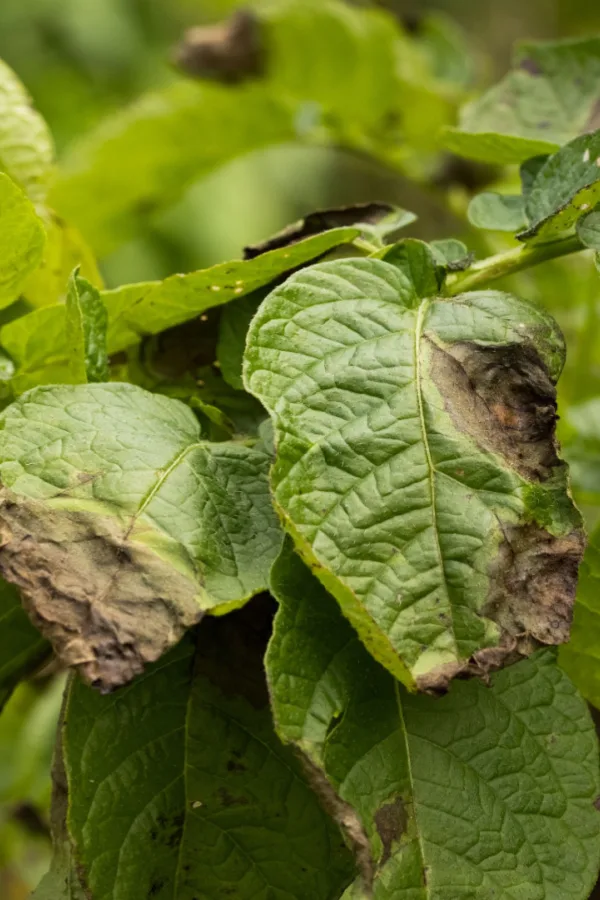
As you can see, the best defense against blight is prevention. After all, if you can simply keep it away from your plants and soil – you can keep your tomato plants safe.
The good news is that armed with a few simple tips, you can all but ensure blight stays far away from your tomatoes. With that in mind, here is a look at the three types of blight that can infect plants, and how to keep it out of your garden and off of your plants.
How To Keep Tomato Blight Away From Tomato Plants
There are actually three distinct types of tomato blight. Early blight, Leaf spot blight, and Late blight. Although they can all bring damage, it’s important to know the difference between the three and when and how they strike plants.
Early tomato blight will appear after the tomato plants have set fruit. This type of blight doesn’t directly damage the fruit. Unfortunately, it will destroy all of the foliage. When that occurs, the tomatoes that are left on the plant have to endure the scalding hot sun without protection. This usually leads to the majority of the fruit simply rotting away.
The second type of blight that can infect plants is Leaf spot blight. Leaf spot blight is by far the most common in the home garden and begins to appear in late June to early July.

Leaf spot starts with the lower leaves turning brown, then black, and they then finally rot away. It will steadily begin to destroy all of the foliage of the plant. Usually within 30 days of first appearing, the plant is gone, resulting in an entire loss of the harvest.
Last but not least, there is Late blight. Late blight starts as tiny, light-colored spots on the foliage of plants. It quickly progresses until the stems, leaves and tomatoes turn black.
Late blight is spurred on by cool, damp temperatures. It tends to be more of an issue in cooler climates, or in growing seasons that are extremely wet and rainy. Left to its own accord, Late blight will eventually spread to the fruit as well, ruining it in the process.
So now that we have covered the three types of blight that can harm your plants, let’s look at a few simple ways to stop it before it ever happens!
2 Simple Ways To Keep Tomato Blight Away – Why Prevention Is The Key!
The bad news is once any of the above tomato blight symptoms arrive, it’s usually too late to help. There simply is no viable cure to stop or kill the spores or blight. Although you can remove the damaged leaves and fruit as soon as you see them, blight will almost always win out in the end.
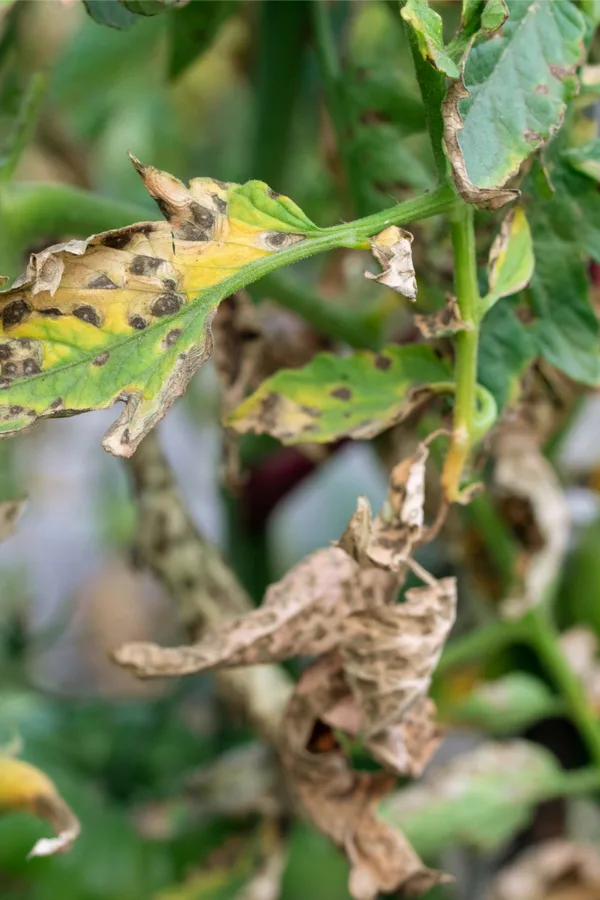
The real key is prevention. And although there are actually quite a few extra things you can do that will help to avoid tomato blight – there are two must-do’s that are huge in preventing the deadly disease from ever showing up – rotating your crops, and protecting your plants from the soil below with a thick layer of mulch!
Rotating Where You Grow Your Plants – 2 Simple Ways To Keep Tomato Blight Away
The number one way to keep tomato blight and disease from finding your tomato plants is by rotating your plants every year to a new location. Or, if you grow in containers, changing out the soil where you grow your plants each season.
Growing tomatoes in the same soil or garden space every year is an open invitation for blight. Tomatoes are highly susceptible to soil-borne disease. Especially spores. And when they grow in the same space year after year, it increases the likelihood spores might be lying in wait.
If growing in a traditional garden or raised bed space, rotate where you grow tomatoes each year for a minimum of 3 years. If you are growing tomatoes in containers, replace the soil each season with new potting soil.
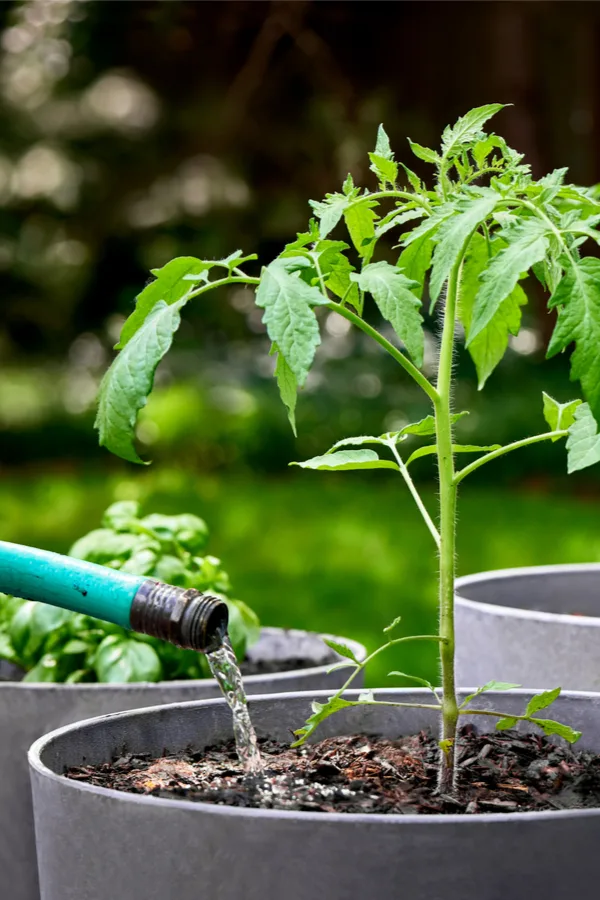
Not only does this help to prevent blight, it also keeps a fresh supply of nutrients in the soil. Those fresh nutrients don’t only help propel strong growth, but they help the plant to better fight off disease as well.
Mulching Tomato Plants – 2 Simple Ways To Keep Tomato Blight Away
When it comes to preventing blight, mulch also plays an extremely important role. As soon as you put your tomato plants in the ground, you need to mulch the area around your plants.
Spores that are alive in the soil can easily splash up onto the foliage. Especially if the soil is bare, making for an easy route for the spores to get to your plants. Every time a hard rain hits or when you water, your plants have the chance to become infected by the spores splashing up. But with a heavy application of mulch covering the soil, the dirt can’t splash.
In addition to applying mulch, it’s important to prune and remove the bottom 6 to 12 inches of your plant’s foliage for this same reason. Keeping the plants up off the ground will help to keep disease away by keeping the soil from directly touching the foliage.
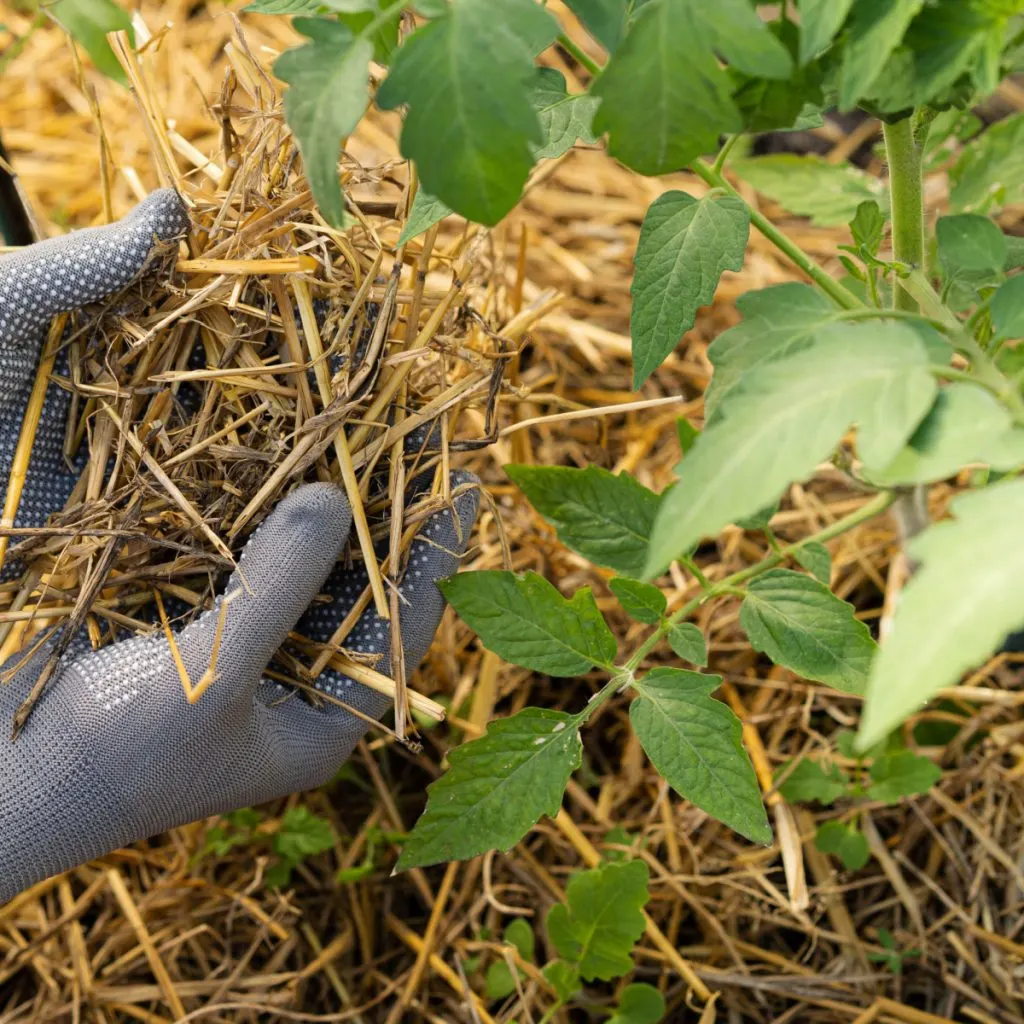
Finally, don’t allow your plants to sprawl on the ground without support. Supporting plants with stakes or a tomato cage will help keep soil and the foliage from coming in contact. And the less the soil touches your plants, the better.
A Few Extra Ways To Protect Plants – 2 Simple Ways To Keep Tomato Blight Away
Beyond crop rotation and mulching your plants, there are a couple of other easy ways to help prevent blight from appearing. And believe it or not, how you water your tomatoes is one of them. See: The 3 Biggest Garden Watering Mistakes – And How To Avoid Them!
Watering is one of those mundane tasks that seems simple, but can cause immense damage if done incorrectly. For starters, don’t water your plants from overhead or with a heavy sprinkler or stream of water. Why? Because it can easily splash spores onto your plants!
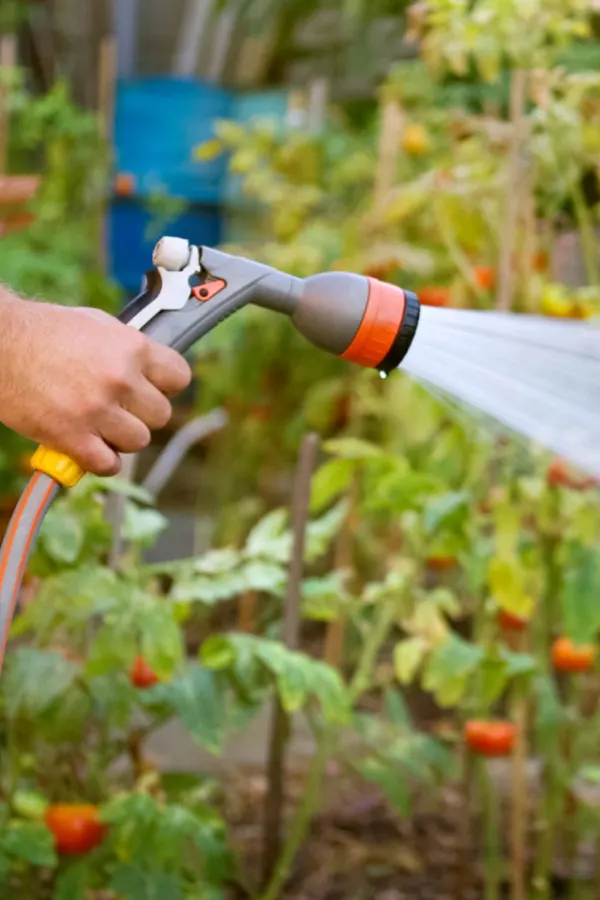
It’s also important to water in the early morning so tomato plants have time to dry off. Wet and damp leaves are the ideal ingredient for spores to grow. Watering late in the day or at night will keep plants moist for extended periods. That can lead to heavier dew levels in the morning, making plants even more prone to disease.
Act Fast If You See Signs Of Blight – 2 Simple Ways To Keep Tomato Blight Away
Once planted, keep a careful eye on your tomatoes for any early signs of blight. If you do notice leaves or stems browning off, act fast to remove them to contain the spread.
By removing these fast, you may be able to save the plant. More importantly, you will keep the spores from dropping off the plant and infecting more soil and more plants. Always clean and disinfect your pruning blades before pruning a new plant to prevent cross-contamination.
Be careful not to place any of these trimmings in your compost pile. Instead wrap them in newspaper or a bag and put them in the trash. When placed in a compost pile, they can easily survive, infecting plants wherever the compost goes.
You may not be able to treat tomato blight effectively once it occurs, but you can definitely help prevent it! Here is to keeping tomato blight far away from your tomato plants this year!
This Is My Garden
Follow Our Facebook Page For Great Gardening Tips And Advice! This Is My Garden Facebook Page
This Is My Garden is a garden website created by gardeners, for gardeners. Jim and Mary Competti have been writing gardening, DIY and recipe articles and books and speaking for over 15 years from their 46 acre Ohio farm. They publish three articles every week, 52 weeks a year. Sign up today to follow via email, or follow along!
